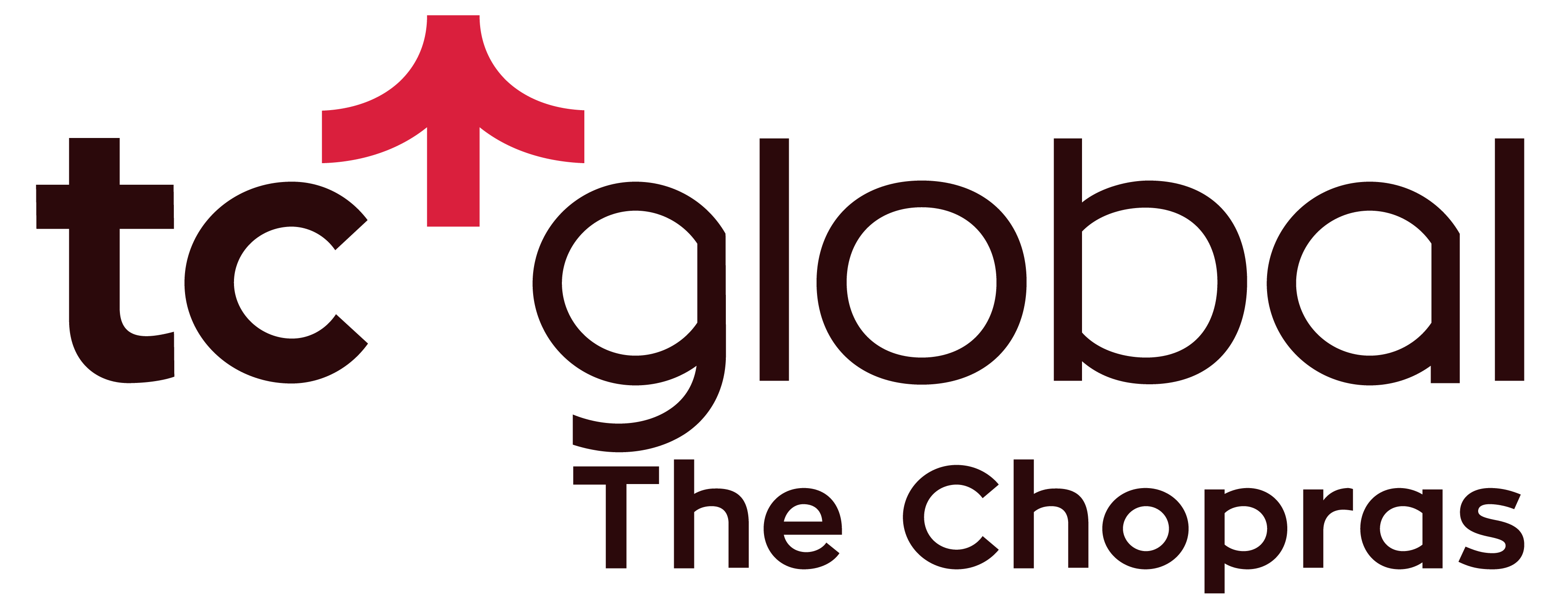Georgia Tech vs MIT could be a choice you may be considering if you’re looking to pursue higher education in the fields of science, technology, engineering, or mathematics. Two of the most renowned universities in this area of study, not including Caltech, both schools offer state-of-the-art facilities and world-class opportunities for academics and research.
We look at an in-depth comparison of these two technical universities across various parameters so that you can make an informed decision about a school that is best suited for your needs.
Overview of Georgia Tech and MIT

Two highly reputed institutions of technology, MIT and Georgia Tech, offer varied experiences to their students.
MIT is a private research university in Cambridge, Massachusetts, world-renowned for its contribution to science and technology. It ranks number one in the world (QS WUR, 2025) and has a relatively smaller student body than any public university.
Georgia Institute of Technology is a public research university in Atlanta, Georgia. Often considered a public Ivy, it ranks 33rd in the country (US News). In addition to being known for its STEM education, the Georgia Tech campus is also known for its lively campus life and dedication to athletics.
Brief History and Background
Georgia Institute of Technology
Founded in 1885 after the American Civil War, Georgia Institute of Technology (GT) represents the transformation of the American South from an agrarian to an industrial economy. In the first 50 years since its inception, Georgia Tech grew from a trade school to a recognised technological institute.
A public technological university under the University System of Georgia, it is located in Atlanta, the state’s capital city. In addition to its main campus in Atlanta, the school also has satellite campuses in Savannah, Georgia, Metz, France, Shenzhen, China, and Singapore.
One of the premier colleges in the United States for engineering and other STEM-related programs, GT ranks 33rd in the country (US News and World Report 2024) and 114th in the world (QS World University Rankings 2025). The institute has also always been ranked among the top ten public universities in the USA.
Massachusetts Institute of Technology
Incorporated in 1861 amidst the ongoing Civil War in the USA, Massachusetts Institute of Technology, or MIT, is a private research university now located in Cambridge, Massachusetts. Founded in response to and to accelerate the nation’s Industrial Revolution, MIT continues to be at the forefront of innovation and development in science and technology.
The school adopted a European polytechnic university model, emphasizing on laboratory work and practical application of the applied sciences and engineering. To reflect their commitment to the applied sciences and technology, the university chose the beaver, nature’s engineer, as their mascot.
Since its inception, MIT has consistently been one of the top ten universities in the world. It currently ranks number one in the 2025 World University Rankings published by Quarendelli Symmonds. In the metrics published by US News and World Report, MIT ranks second in the country after Princeton University. It continues to be one of the most pioneering, sought-after, and selective schools for the study of science and technology. If you’re looking to study at MIT, then you need to do detailed research on how you can get into MIT, making sure you tick all the boxes.
Key Statistics and Rankings
Here is a table comparing the key stats and ranks when it comes to MIT vs Georgia Tech.
| Georgia Tech | MIT | |
| Campus | Atlanta, GA | Cambridge, MA |
| Nickname | Yellow Jackets | Beavers |
| Mascot | Wreck, a Ford Model A Sport Coupe | Tim the Beaver |
| U.S. News National Rank 2024 | 33 | 2 |
| QS World University Rank 2025 | 114 | 1 |
| Undergraduate Student Body | 19,505 | 4,576 |
| Graduate Student Body | 28,441 | 7,344 |
| % of International Enrollment | ~26.4% | 29.17% |
| Average Acceptance Rate | ~ 13% | ~ 4.8% |
| Student to Faculty Ratio | 22:1 | 3:1 |
| Number of Undergraduate Programs | 39 majors and 71 minors | 55 majors and 58 minors |
| Number of Graduate Programs | 100+ | 70+ degrees in 49 areas |
| Research Expenditure | Over $1 billion | Over $1 billion |
| Number of Athletic Teams | 15 teams competing in NCAA Division I | 33 teams playing at Division III |
| Number of Clubs and Student Organizations | 500+ | 450+ |
| Colours | Tech Gold, Navy Blue and White | Cardinal Red and Grey |
Georgia Tech vs MIT: Academic Comparison

Both Georgia Tech and MIT offer a wide range of academic programs but have a specialized focus on STEM education. While MIT is a world leader in technical education, Georgia Tech is also a premier institute of technology with a reputation that is not as large as MIT’s. Within the country, GA Tech is a highly renowned public school, especially for the study of engineering and other applied sciences.
In this section, we analyse MIT and Georgia Tech’s undergraduate and graduate courses, choices and flexibility, ranking, degrees and class sizes, academic calendars, research facilities, and budgets, all of which can become important factors in deciding between the two universities.
Undergraduate Programs
Program Options and Course Load: While both schools primarily focus on science, technology, engineering, and mathematics academic programs, they also have a limited number of options in business, humanities, and the social sciences. Despite being the smaller school, MIT offers over 55 majors to choose from at the undergraduate level, while GT has less than 40.
Based on typical student experience, the academic schedule is typically more densely packed in Georgia Tech when compared to Massachusetts Institute of Technology. That is to say, undergraduate students, especially in engineering programs,.end up taking more courses per semester at GT when compared to its northeastern competitor. It is important to note that this does not make an undergraduate degree from MIT any less challenging!
Another significant difference is the co-op program. Georgia Tech has a reputation for its hands-on, practical approach, so GT graduates are ready to meet the demands of the industry. The engineering school especially offers a five-year undergraduate co-op program, designed so that a student can complement academics with paid practical work experience. MIT does not have a co-op program, but it has a great reputation for research and innovation.
Ranking and Reputation: Even though the university ranking should not be the only factor when it comes to choosing universities, MIT stands clearly ahead of GT at both the national and global levels. MIT stands 2nd in the country, only to be superseded by Princeton, according to US News and World Report and stands 1st on the global scale, according to the metrics published by QS World University Ranking. Georgia Institute of Technology stands at 33rd and 114th place on the national and global scale, respectively.
In terms of reputation, MIT is a familiar name across the globe while Georgia Tech does not carry the same weight. The pedigree of the school can open varied doors for MIT graduates all across the globe. That said, Georgia Tech does not fall far behind when it comes to reputation. In fact, it is also a popular choice of school for many who do not get into MIT. The southern school’s emphasis on practical application and collaborative research also makes it a top choice for numerous students.
Standardised Test Scores: Unlike most American colleges that have continued with their test optional policies since the pandemic, both GT and MIT now require applicants to submit SAT/ ACT/ IB/ AP scores when applying for their undergraduate programs.
MIT, being one of the top universities in the world, requires a SAT score of anywhere between 1530 and 1580 to be deemed competitive. The average ACT scores of admitted students are also typically 35 or 36. Georgia Tech, on the other hand, considers a SAT range of 1370 to 1550 as competitive. With ACT, the scores are typically between 31 and 35.
If you are looking at other admission requirements, MIT does not have an official minimum high school GPA, but competitive applicants typically have at least a 3.5 on a 4.0 scale. The minimum GPA to get into the school of engineering at GT is 3.3 on a 4 scale. For most courses, applicants are also required to display a mastery in mathematics, including calculus, science, and English.
Core Curriculum: The General Education requirement at GT is designed to enable students develop a well rounded focus in addition to the deeply rigorous technical and applied education. All undergraduate students, during their 4-year study, are required to demonstrate a level of proficiency in the following areas –
- Communication
- Quantitative (including differential and integral calculus)
- Institutional Options (typically in areas of computing, algorithmic complexity and so on)
- Humanities, Fine Arts and Ethics
- Natural Sciences, Math, and Technology
- Social Sciences
- Constitution and History
- Wellness
- 18 hours of lower division requirements in each major
At MIT, the core curriculum is called General Institute Requirements (GIRs). MIT’s GIRs include the science core (six foundational courses in mathematics, physics, biology, and chemistry), the HASS requirement (a minimum of eight subjects in the humanities, arts, and social sciences), the communication requirement (to develop effective writing and speaking skills), laboratory requirement (a minimum number of credits of practical, project-based work), REST requirement (two subjects of Restricted Electives in Science and Technology) and a physical education requirement.
Class Size: When it comes to the student body, Georgia Tech is much bigger than MIT, considering it is a public university. GT has about 19,505 undergrads, and the number is around 4,576 at MIT. The student-to-faculty ratio at GT is average, at about 22:1, while MIT has one of the lowest student-to-faculty ratios in the country at 3:1. 33% of classes have fewer than 20 students at Georgia Tech, while about 70% of classes at MIT have less than 20 students. Depending on personal preferences, these numbers can be an advantage or a disadvantage. Some students thrive in smaller classes with more individualised attention, while some prefer the independence that larger classes give them.
Top Majors:
| Georgia Tech | MIT |
|
|
Graduate Programs
Graduate Program Options: MIT has about 70 graduate and doctoral programs to choose from, while Georgia Tech offers 100+ options. MIT is ranked significantly higher and has a greater global reputation than GT. Besides the more popular engineering and technology specialisations at the graduate level, MIT is also known for its programs in architecture, business, and linguistics. It is also a world leader when it comes to Data Science and Artificial Intelligence.
GT also has a few options for master’s and doctoral degrees beyond STEM. Their Scheller College of Business has a solid MBA program but is not ranked as highly as the MIT Sloan School of Business. Besides being a state school, GT also takes in over 28,000 graduate students when compared to 7,000+. This makes the competition that much stiffer at MIT.
College Admissions: While Georgia Tech admissions are competitive (the school has an acceptance rate of about 13 – 15%), MIT takes this competition to another level. The average rate of acceptance at MIT is typically about 4.8%.
The minimum admission criteria in both universities include a valid baccalaureate degree from a recognised university (GPA varies with departments), a strong application form with a well-written Statement of Purpose (SOP), relevant work experience (for some courses), letters of recommendation (LORs) and English proficiency test scores (for international students). However, there is a difference when it comes to standardised test score submission. While most graduate programs at MIT require you to submit GRE or GMAT scores, they are not mandatory at Georgia Tech. GRE scores will be considered if submitted but are not necessary.
Top Graduate Programs:
| Georgia Tech | MIT |
|
|
Overall and Subject Ranking
| Georgia Institute of Technology | Massachusetts Institute of Technology |
| Overall Rank US News 2024: 33 | Overall Rank US News 2024: 2 |
| Times Higher Education WUR: 36 | Times Higher Education WUR: 3 |
| QS WUR 2025: 114 | QS WUR 2025: 1 |
| Subject and Other Ranking (Source: QS Global Subject Rankings 2024) | |
|
|
From the table, it becomes clear that while Georgia Tech is one of the premier universities for STEM and related programs, MIT stands almost unbeaten when it comes to most of its programs. Their focus areas are very similar, owing to their status as technological institutes. Both universities are academic giants in their own right, and to consider them as options for higher education is the mark of an excellent student.
Academically speaking, one cannot really go wrong when choosing between MIT and Georgia Tech. They offer different advantages to their status, primarily owing to their ownership status. When choosing, the focus should be on the specific departments, their curricula, teaching styles and pedagogies, and what best aligns with your career goals.
Constituent Schools
Georgia Institute of Technology is composed of 6 main colleges divided into 29 schools. The six colleges are –
- College of Engineering
- College of Computing
- College of Sciences
- College of Design
- Ivan Allen College of Liberal Arts
- Scheller College of Business
MIT’s undergraduate and graduate programs are offered by the following schools
- School of Architecture and Planning
- School of Engineering
- School of Humanities, Arts, and Social Sciences
- Sloan School of Management
- School of Science
- MIT Schwarzman College of Computing
Research Opportunities
Both Georgia Tech and MIT are premier R1 research universities that encourage their students to push the boundaries of their disciplines. Both spend over $1 billion on research every year. As a state university, Georgia Tech is primarily funded by federal, state, and local agencies, which are then supplemented by private foundations. MIT, as a private university, is primarily dependent on endowments and is more renowned for its cutting-edge research facilities.
In addition to the main Georgia Tech Research Institute (GTRI), the university is also home to the Enterprise Innovation Institute and 10 interdisciplinary research centres. GTRI’s core research areas include complex and agile systems engineering, sensor design and integration, information management and cybersecurity, and defence technology development. The university also consistently ranks among the top US Universities based on the volume of research conducted.
Similarly, MIT also enables flourishing research across all of its 30 departments. The school’s research capabilities are enhanced through the work of MIT Lincoln Laboratory, the Woods Hole Oceanographic Institution, active research relationships with industry, and a wide range of global collaborations. MIT research has inspired the inventions of the first interactive minicomputer, the e-mail, transistor radio, Kindle and the e-ink, technicolor, modern lithium-ion batteries, PET scans, and numerous other innovations that have changed the world. MIT also works closely with its neighbour, Harvard University, especially in the field of genomics research.
To sum up, both universities foster robust research environments with creative liberty in search of new knowledge. They help students develop a research mindset from the undergraduate level, helping their alumni become leaders and catalysts of change in the world.
Key Dates for Application
In this section, we will be looking at the key dates for application and admission into undergraduate programs (Fall semester) to get a sense of the timeline. Graduate schools have a different timeline. It is also recommended that you verify with the specific department / school that you are applying to, just to ensure they do not follow a different cycle.
| Important Dates | Georgia Institute | MIT |
| Early Action (EA) Deadline | EA 1 – October 15 EA 2 – November 1 |
November 1 |
| Regular Admissions Deadline | January 6 | January 4 |
| EA Decision Posted in | January | Mid – December |
| Financial Aid Application Deadline | EA deadlines | February 15 |
| Regular Decision Posted in | March | Mid-March |
| Deadline to accept offer of Regular admission | May 1 | May 1 |
| Average Acceptance Rate | ~ 13% | ~ 4.8% |
Admission Options to be considered in the MIT GeorgiaTech debate:
- Both schools do not have an Early Decision (ED) admission pathway.
- The Early Action pathway in both schools is non-restrictive and non-binding.
- Georgia Tech’s EA is split into two. EA 1 is exclusively for Georgia Students, while EA 2 is only for students non-Georgia students only
- You can apply only once per entry year at MIT. This means that if you are not selected for the EA round, you cannot apply through the regular admission route in the same year.
- Students who do not complete the GT application by the EA deadline can be considered for Regular Decision (RD)
- Georgia Tech accepts Common Application. MIT does not accept any of the common apps, but requires students to go through their own application portal called MyMIT.
- The application fee for MIT is $75, while it is $95 for domestic students and $105 for international students at GT.
Academic Calendar
Both schools follow a semester system when it comes to their academic calendar. A year is divided into the Fall Semester (August/ September – December) and the Spring Semester (January – April/ May). Both schools also have an accelerated/ shorter summer term during which some academic activities occur.
MIT vs Georgia Tech: Campus Life and Environment

From their location to the campus culture, MIT and Georgia Institute of Technology offer varied experiences to their students. Here’s a look at some of the other factors that can make a prospective student prefer GT to MIT or the other way around.
Location
One of the key factors that separates the two tech titans is their location. MIT is located in Cambridge, Massachusetts, about 6 miles from Boston. Cambridge is, in fact, a part of the Greater Boston Area. The campus is well integrated with the city, providing varied opportunities for networking, cultural, and socialising activities. The location of MIT is more historic, intellectual, and infamous for its harsh winters.
Located in the American South, Georgia Institute of Technology typically experiences a subtropical climate with hot summers and mild winters. The school is located in urban Atlanta, a city known for its financial and industrial sectors. The city also has the third largest concentration of Fortune 500 companies in the country. A welcome mix of southern hospitality and modern day diversity, Atlanta also offers varied cultural and recreational opportunities for its people.
Besides the weather, the cost of living in Atlanta is significantly cheaper than in the Cambridge-Boston area.
Campus Size and Facilities
Considering the impact the two schools have had over the years, both GeorgiaTech and MIT are relatively small universities, especially when compared to the Ivy Leagues that span thousands of acres. Of the two, MIT is much smaller, with about 168 acres of land that encompasses over 200 buildings. Georgia Tech extends over 450 acres, with 237 buildings.
One of the top green colleges, according to the Princeton Review, GT campus is known for its wooded areas and lush lawns. The campus also provides state-of-the-art facilities for its students, ranging from top-notch libraries, study areas, a competition pool, a diving well, martial arts studios, and an indoor climbing wall. The Campus Recreation Center (CRC) houses all campus recreation facilities and programs, including Women in the Wilderness, Annual Georgia Tech Ski Trip, Climbing Wall Competition, Poker series and many more.
Similarly, MIT provides all kinds of amenities to its students, including state-of-the-art classrooms, research labs, gyms, auditoriums, cafeterias, lawns, study areas, and athletic facilities. The campus vibe is composed of brilliant, highly motivated people who are passionate about science, technology, and innovation. Its proximity to Harvard also provides an intellectual background for its students to immerse themselves in academics and research.
Student Activities and Organizations
When it comes to extracurricular activities, both universities have a culture of enabling students to explore other interests beyond academics.
Athletics:
If athletics is a key factor in your choice of university, then Georgia Tech is a better choice than MIT. MIT Engineers have 33 teams that play varied sports in the NCAA Division III. Georgia Tech has a rich tradition in collegiate athletics and competes for championships in the NCAA Division I and the Atlantic Coast Conference. The Georgia Tech Athletic Association sponsors seventeen varsity sports. However, both schools have a culture of club sports for both recreation and fitness.
Student clubs and organizations:
Looking beyond athletics, MIT enables over 450 clubs and student organizations to help their students pursue varied interests beyond academics. Many of these clubs are also uniquely focussed on innovation and research opportunities. The MIT campus is a great fit for those riddled with scientific curiosity. Moreover, the university has an active Greek life supported by over 30 sororities and fraternities.
Georgia Tech houses more than 500 student clubs and organisations, not including a student media house and numerous events that take place throughout the year. The campus also accommodates 56 chapters of fraternity and sorority life with 25% of undergraduates involved in them.
Housing and Accommodation
At the undergraduate level, MIT requires freshmen to live on campus, while it is optional at GT, even though about 97% of first-years choose to live on campus. MIT has 11 residence halls for undergrads while GT has over 20 different housing options for undergraduates alone. Options include traditional dorms, suites, and apartment style rooms that are shared among students. About 70% of students choose to live on campus at MIT while the number is around 44% for GT, considering the size of the student body.
Both schools also have dedicated housing options for their graduate students, ranging from residence halls to family apartments. The housing office of both schools also assists students with the requirements of off-campus accommodation.
Georgia Tech vs MIT: Financial Aspects
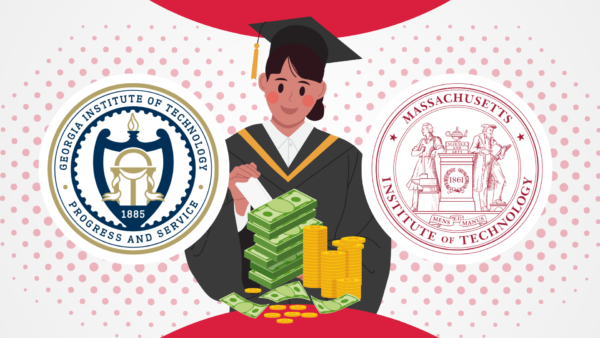
If costs are an important consideration in your decision-making process, then there is a clear advantage in choosing Georgia Institute of Technology over Massachusetts Institute of Technology.
As a public university, Georgia Tech is significantly more affordable when compared to a private university like MIT. This is all the more important, for, as a resident of Georgia, you can also be eligible to the university’s subsidised rates. Even when comparing living expenses, the cost of living in Atlanta is also about 35 – 50% lesser when compared to the Boston area.
That said, both schools also have highly inclusive financial aid programs. Here is a table that provides a general picture of the cost of studying in each of these universities.
| Annual Rates | GT | MIT |
| Tuition (Bachelor’s) | In state – $10,512 Out of State – $32,938 International – $33,566 |
$61,990 |
| Tuition (Master’s, not including professional programs) | In state: $16,500 – $30,000 International: $36,000 – $45,000 |
~ $61,990 |
| MBA Tuition | In state – $30,246 International – $43,604 |
$86,550 |
| Housing (On-Campus) | $7,654 | $10,650 – $14,630 |
| Food (Meal Plan) | $5,954 | $7,216 |
| Off-Campus Housing | $10,000 – $25,000 | $12,430 – $29,160 |
| Types of Financial Aid | 1. Scholarships and Grants 2. Loans 3. Work Study 4. Federal Aid (Both merit and need-based options are available) |
1. MIT Scholarships 2. External aid 3. Federal aid 4. Work Study 5. Loans (only need-based) |
| International student scholarships | Not eligible for
|
|
| Estimated average grant for an aid student | $14,927 | $ 63,729 |
| Admission Decisions | Need blind only for in-state students | Completely need blind |
| Demonstrated Need Cover | About 50% | 100% (Families with income less than $75,000 have 0% parent contribution) |
Here are a few important points to be kept in mind.
- The tuition fees and funding opportunities are very different when comparing public and private universities. Private universities are more expensive but also have more financial aid options. Public universities are cheaper but also have lower demonstrated need covers.
- Both have numerous scholarship and financial aid options. It is important to research specific scholarship options for the program/ department that you are applying for.
- The tuition fees are average figures, calculated for a typical academic year of 9 months. The fee will be higher should you choose to take extra courses in the summer months.
- The tuition fee amounts in the table are indicative of only the cost of attendance. It does not include books, student health insurance and other expenses. Student insurance alone can cost between $3,000 – $7,000 a year.
- While MIT only offers need-based scholarships, GT has both merit and need-based options.
- At MIT, the financial need requirements of international students are met in the same way as it is for domestic students. GT, since it is funded by the state, has no options for overseas students. International students can however apply for work study or external sources of funding.
Georgia Tech vs MIT: Career Prospects and Alumni Network
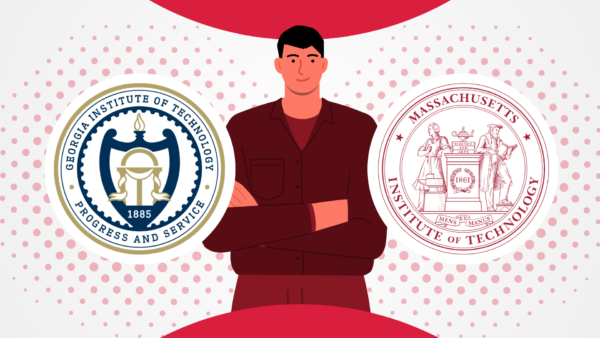
Considering the reputation of the two universities, and their extensive alumni networks,, there is no doubt that a graduate of these schools will have numerous opportunities of their choosing after graduation. The academic rigour and culture of research in these two universities create a pedigree that recruiters often compete to get for their organisations.
Employment Rates
As one of the top colleges for graduate employment in the US, MIT has an employability rate of over 96%. According to the metrics published by Times Higher Education ranking, it stands second in the US regarding graduate employability, only to be superseded by the California Institute of Technology. In contrast, GT has an employment rate of about 89 – 90% of its graduates receiving employment offers within six months of graduation.
Notable Alumni
MIT has over 140,000 living alumni worldwide, while Georgia Tech’s alumni network extends to a community of 170,000 people who are some of the brightest minds in science, technology, and business.
If you compare Nobel Laureates as a mark of academic excellence, MIT is associated with about 101 Nobel Prize Winners, while former president Jimmy Carter and Chemist Kary Mullis are from Georgia Tech.
Notable Alums of MIT
- Kofi Annan, Former Secretary General of the United Nations
- Buzz Aldrin, Astronaut
- Richard Feynman, Physicist
- Ben Bernanke, Economist
- Carly Fiorina, Former CEO of HP
- Raghuram Rajan, Economist
- Jonah Peretti, CEO of Buzzfeed
- Shirley Ann Jackson, Nuclear Physicist
Other Notable Alumni from Georgia Tech
- John Young, Astronaut
- Jeff Foxworthy, Comedian and actor
- Dennis Hayes, Founder of Hayes Communications
- Robert Milton, Former CEO of Air Canada
- Wallace Coulter, Engineer
- Krishna Bharat, Research Scientist, Creator of Google News
Career Services
From internships to employment opportunities, organisations and recruiters seek students and graduates of top-notch institutions like MIT and GeorgiaTech. In both universities, the career centers for strategy and success assist their students in gaining practical experience, building networks, and communicating their aptitudes and skill sets to prospective employers. They also play an instrumental role in building leadership skills and specialised skills that are essential to a workplace.
In both universities, the career centre connects students to internship opportunities and prospective employers through seminars, job fairs, and numerous other on-campus events. Their goal is to clarify career aspirations, identify opportunities, and offer support at every stage of career development.
Georgia Tech vs MIT: Conclusion

Deciding between Georgia Tech and MIT involves considering various factors such as academic strengths, campus life, financial implications, and career prospects. Both universities offer unparalleled opportunities, but your decision should align with your personal and professional goals.
They are located about 1,000 miles apart and have more differences than similarities. The key aspect that ties the two schools together is that they are both technological institutes with a specialised focus on STEM and related fields. They also provide numerous financial aid and housing options for their students.
Beyond that, the following list highlights the key differences
- MIT ranks number 1, while GT ranks 114th according to QS World University Ranking 2025.
- In the US, MIT stands 2nd after Princeton, while Georgia Tech ranks 33rd.
- Despite being a polytechnic institute, MIT also has a reputation for social sciences, architecture, linguistics (Noam Chomsky retired from MIT!), and business. While GA Tech has a few programs in social sciences, business and humanities, the institute is most renowned for its engineering and other STEM programs.
- Georgia Tech, being a public university, is more affordable than MIT, especially if you are from the state of Georgia.
- Despite being a smaller school, MIT has more program options at the undergraduate level. The course load at MIT is also lower than that of GT. This does not make MIT easier in any way!
- MIT allows you to cross-register for courses at Harvard, while GT offers a co-op program for engineering undergraduates.
- MIT is much more competitive and difficult to get into, when compared to Georgia Tech. The acceptance rates of the two schools are 4.8% and 13% respectively.
- The selectiveness of their admission processes are directly proportional to their student populations. MIT’s population is about one-fourth of that of Georgia Tech’s.
- MIT maintains a student-to-teacher ratio of 3:1, while it is about 22:1 at GT, typical of a public university system.
- GT has a greater reputation for athletics than MIT’s academic and tech vibe.
- Boston is more expensive than Atlanta and is also infamous for harsh winters. In contrast, Atlanta has hot summers and very mild winters.
Considering their reputation, the ultimate call rests on whether the course curriculum and the learning outcomes meet your career plans. The most significant part of your research is to compare courses, syllabi, electives, faculty and research facilities of your preferred degree program, speak to current students, and then decide depending on which school better suits your needs.
We understand that becoming an international student can be very thrilling, but the prep and paperwork of it all can get overwhelming. The easiest way to reduce your stress is to sign up with TC Global.
We simplify international education, learning, and mobility through connecting students, universities, and a global community on a single platform where there are over 1000+ education providers and over 80,000+ courses.
Our platform enables students to study anywhere in the world in just a few steps. From search and discovery and finding the right course fit for you, to applications, visas and departure – we see you through it all.
To move forward with us, download our app or visit tcglobal.com and sign in to create an account on our student platform and onboard with us in quick, easy steps.! ?
Then simply set up a visit Calendly.com/tcglobal to pick a Relationships Team closest to you and choose a slot to meet with a Relationship Member. Be it Georgia Tech vs MIT or any such debates, our experts will be with you every step of the way to help you decide.
Let’s shape your future together.
FAQs
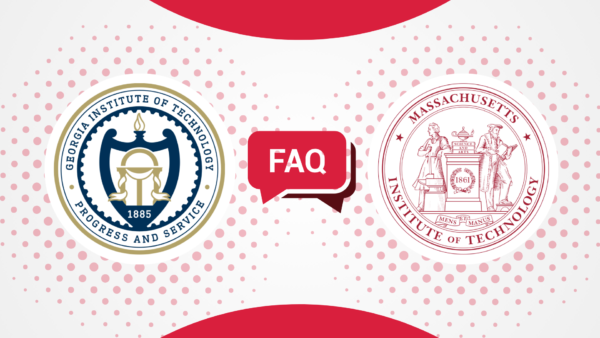
Is Georgia Tech a Tier 1 college?
While there is no official classification of colleges into tiers, universities in the US can be classified based on their reputation and selectiveness of admissions. Keeping that in mind, the Ivy League, Stanford, Caltech, MIT, and Johns Hopkins can be considered Tier 1, while Georgia Tech, NYU, UCLA, UC Berkeley, Tufts, USC, and many others are considered Tier 2. Having said that, these are top-ranked universities and are extremely competitive as well. This is just a loose, informal classification and should not be seen as inferior in any way. You may also want to explore other comparisons – like Georgia Tech and UT Austin to make a better decision.
Is Georgia Tech a prestigious university?
Yes, known particularly for its engineering programs, Georgia Tech ranks 33rd in the country.
Is MIT harder to get into than Harvard?
When it comes to admissions, MIT and Harvard are two of the most competitive schools in the United States. They both have an acceptance rate of 3 – 5%.
Is Georgia Tech an Ivy?
Georgia Tech is considered as one of the public Ivy League universities.
Is Georgia Tech hard to get into?
With an acceptance rate ranging between 13 and 15%, Georgia Tech is highly selective in its admission processes.
Is Georgia Tech expensive?
Compared to private universities, especially the Ivies and other Tier 1 schools, Georgia Tech is more affordable. The undergraduate tuition for in-state students is $10,512 while it is around $33,000 for non-Georgia and international students.
Is MIT better than Ivy League Schools?
It depends on the program/ discipline you are looking at. When it comes to STEM and allied subjects, MIT even surpasses the Ivies.
Is MIT better than IIT?
Both MIT and the Indian Institute of Technology (IIT) are globally recognised institutions in the field of STEM. However, MIT is ranked higher and has a greater global recognition when compared to IIT.
What is the GPA required for MIT?
Typically, a weighted GPA of 4.1 or higher is required to be considered competitive. However, a lower GPA can be counterbalanced by high SAT/ ACT scores.
Why is MIT not part of the Ivy League?
The history of the Ivy League goes back to athletics and participation in Division I sports. MIT athletes participate in NCAA Division III. Moreover, when the Ivy League was officially established in 1954, MIT did not have a robust athletic program.
Can I go to MIT after the 12th?
Yes, MIT has a wide array of undergraduate programs that you can apply to, after 12th. While the university does not have any specific required courses, it is expected that applicants are enrolled in a broad, rigorous program in high school. Students are also required to take standardized tests such as the SAT or ACT.
Can I get a 100% scholarship to MIT?
MIT meets 100% of students’ demonstrated financial needs, irrespective of their immigration status. Demonstrated financial need is the difference between the Cost of Attendance and your Expected Family Contribution. At MIT, family contribution is zero for families earning less than $75,000 per annum. MIT is also entirely need-blind for both domestic and international students.
Is Georgia Tech Better than UIUC?
Georgia Tech is ranked higher than UIUC and is seen as more competitive. Both are great schools, though. The locations are different. GT is in Atlanta, a bigger city, and UIUC is in Champagne, a smaller town. In computer science, UIUC is ranked slightly higher.
Hope this gives you a great insight into the Georgia Tech vs MIT decision.
You May Also Like
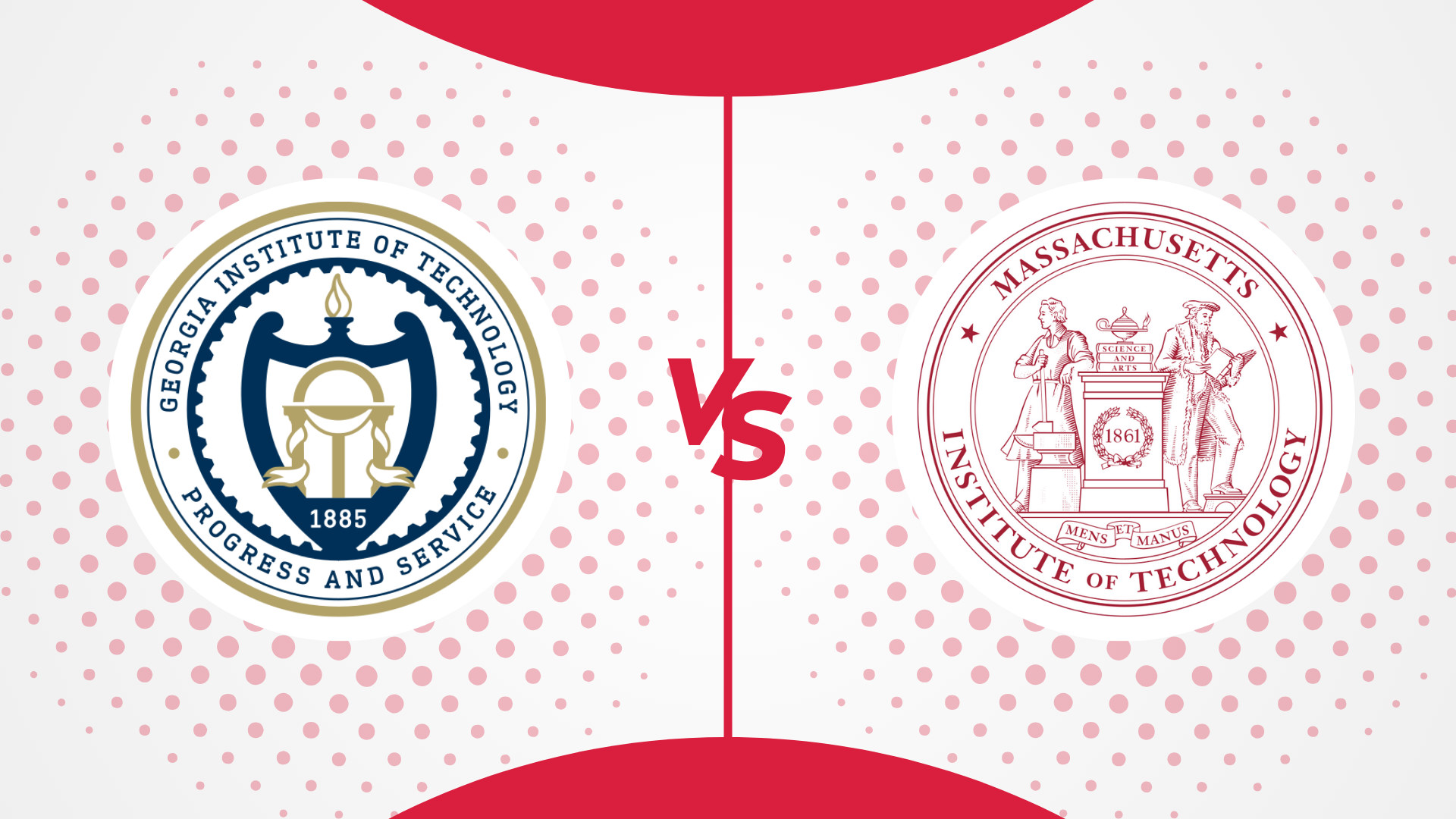
Compare more universities in USA
-

Purdue vs UIUC: How Do They Compare in 2025?
December 16, 2024 -
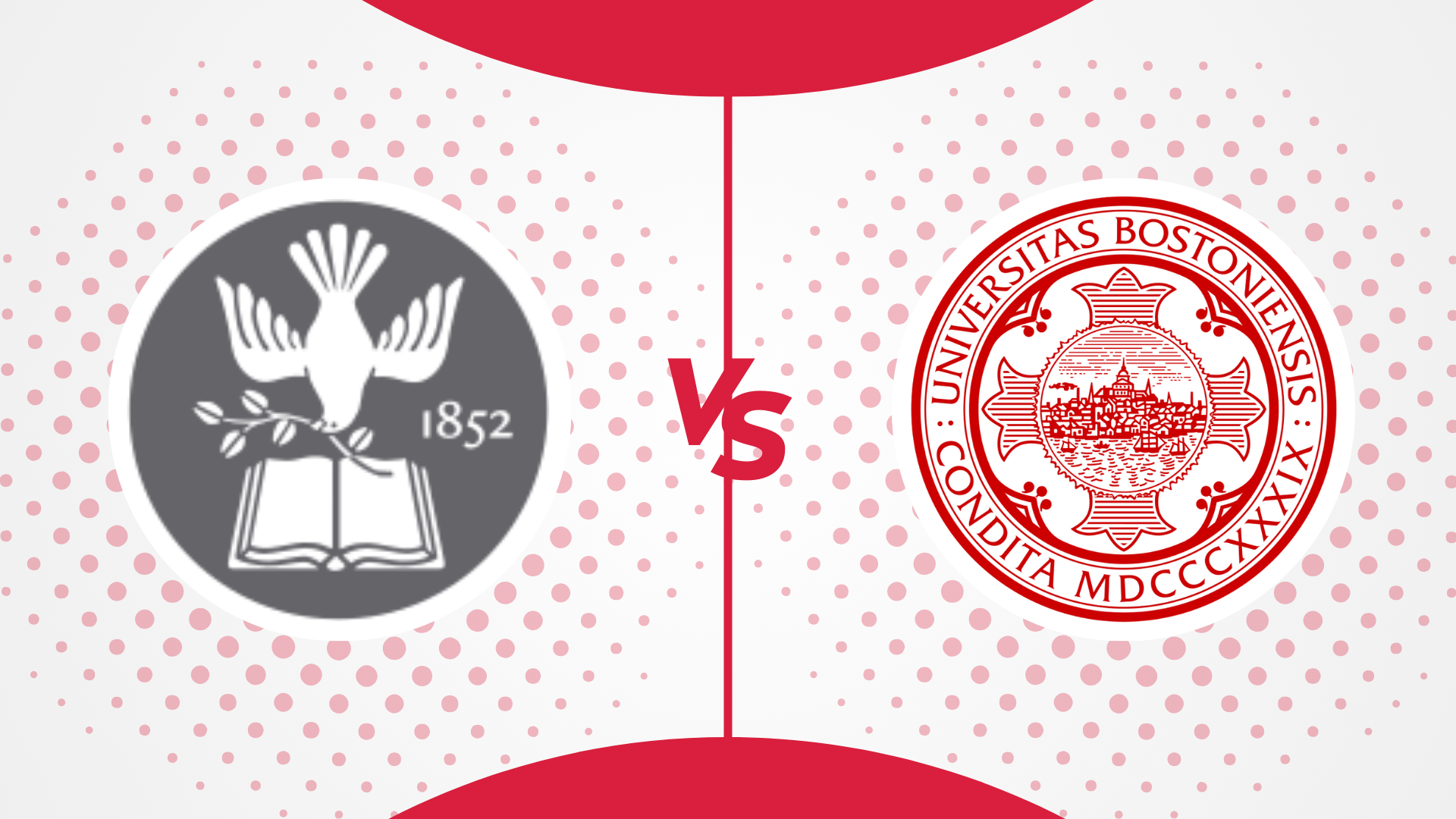
Tufts vs BU: How Do They Compare in 2025?
December 16, 2024 -
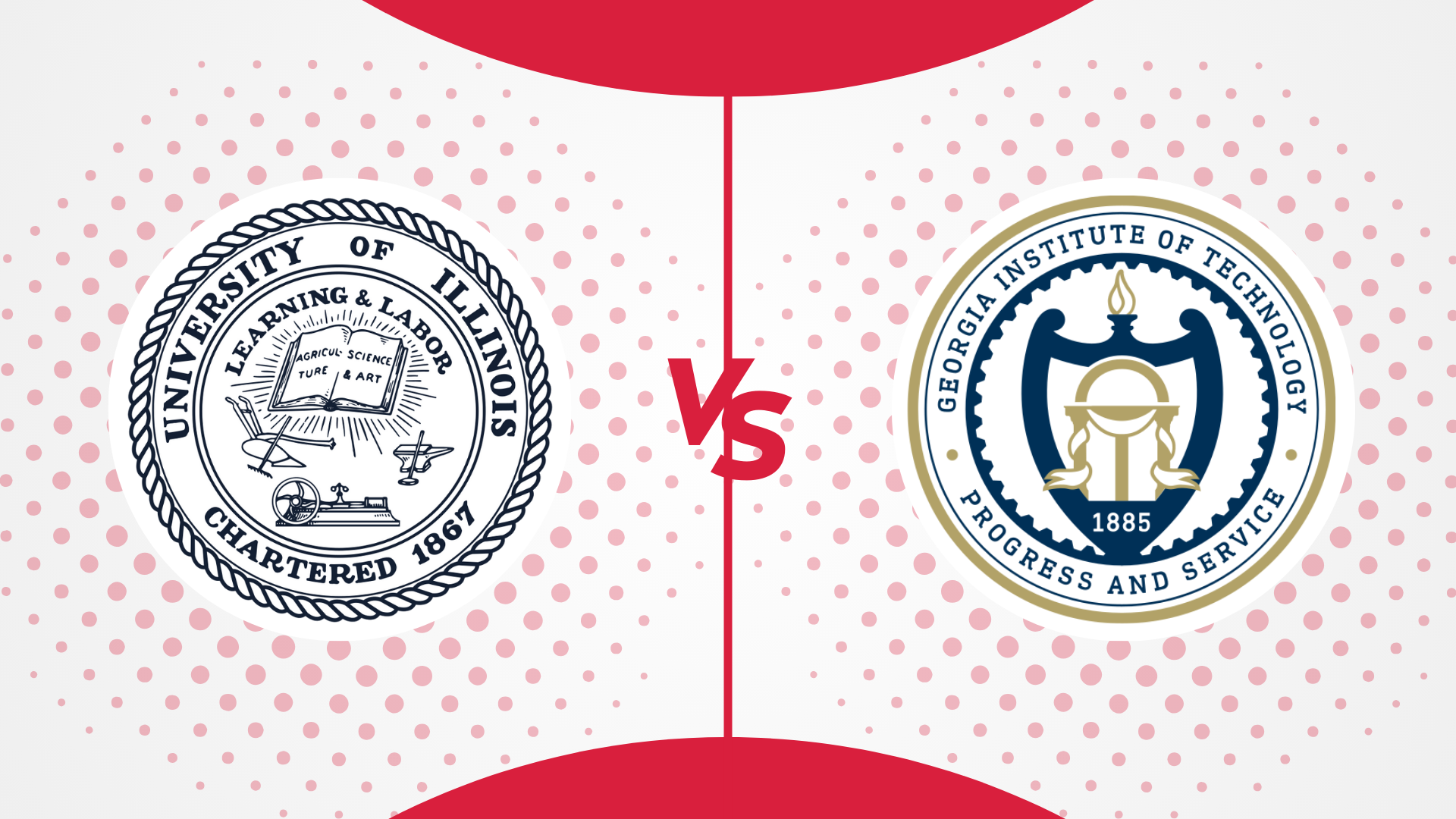
UIUC vs Georgia Tech: How Do They Compare in 2025?
December 3, 2024 -

Georgia Tech vs UT Austin: How Do They Compare? [2025]
September 24, 2024 -

UC Davis vs UC Irvine: How Do They Compare in 2024
September 10, 2024 -
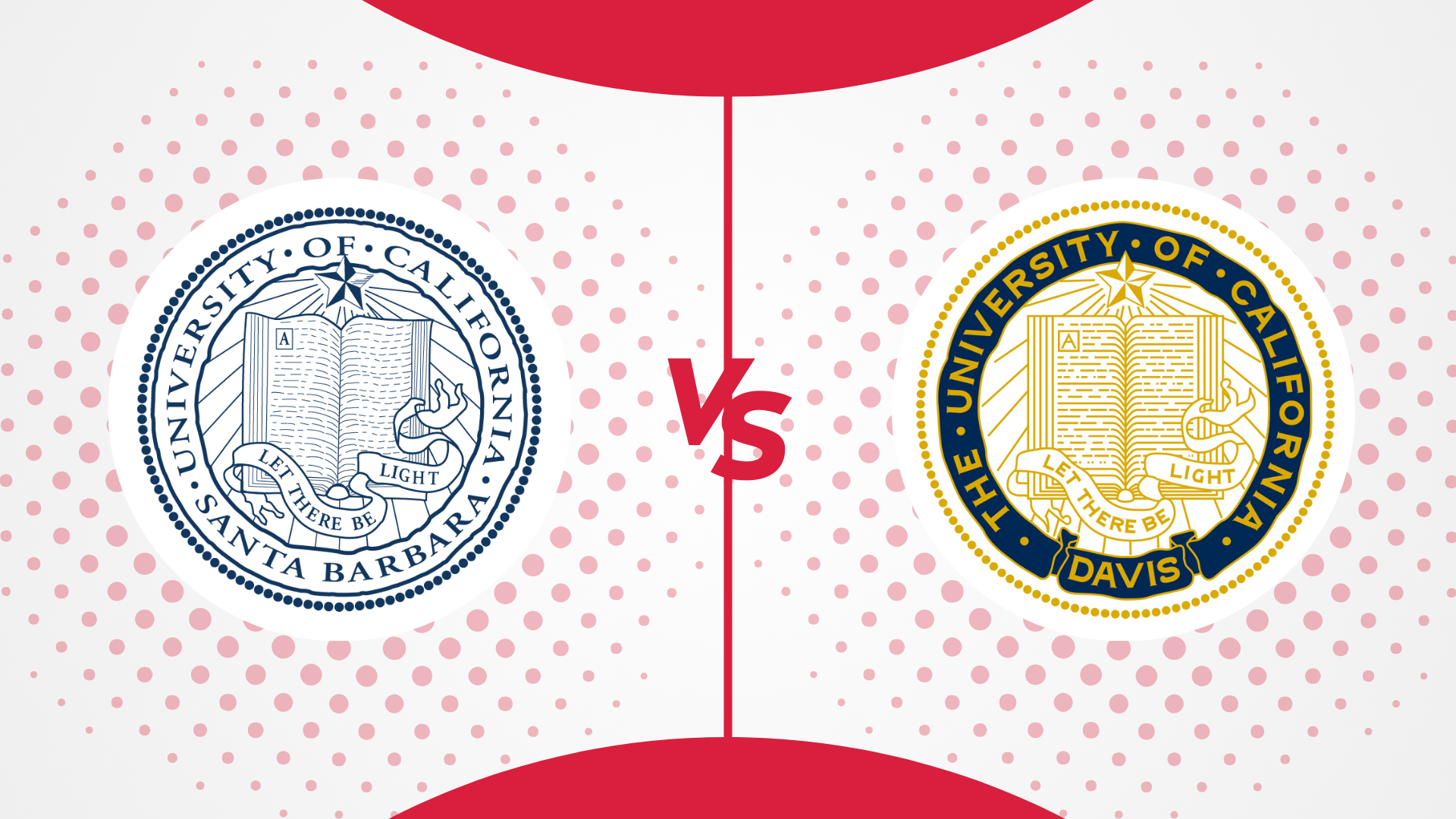
UC Santa Barbara vs UC Davis: How Do They Compare? [2024]
August 30, 2024 -
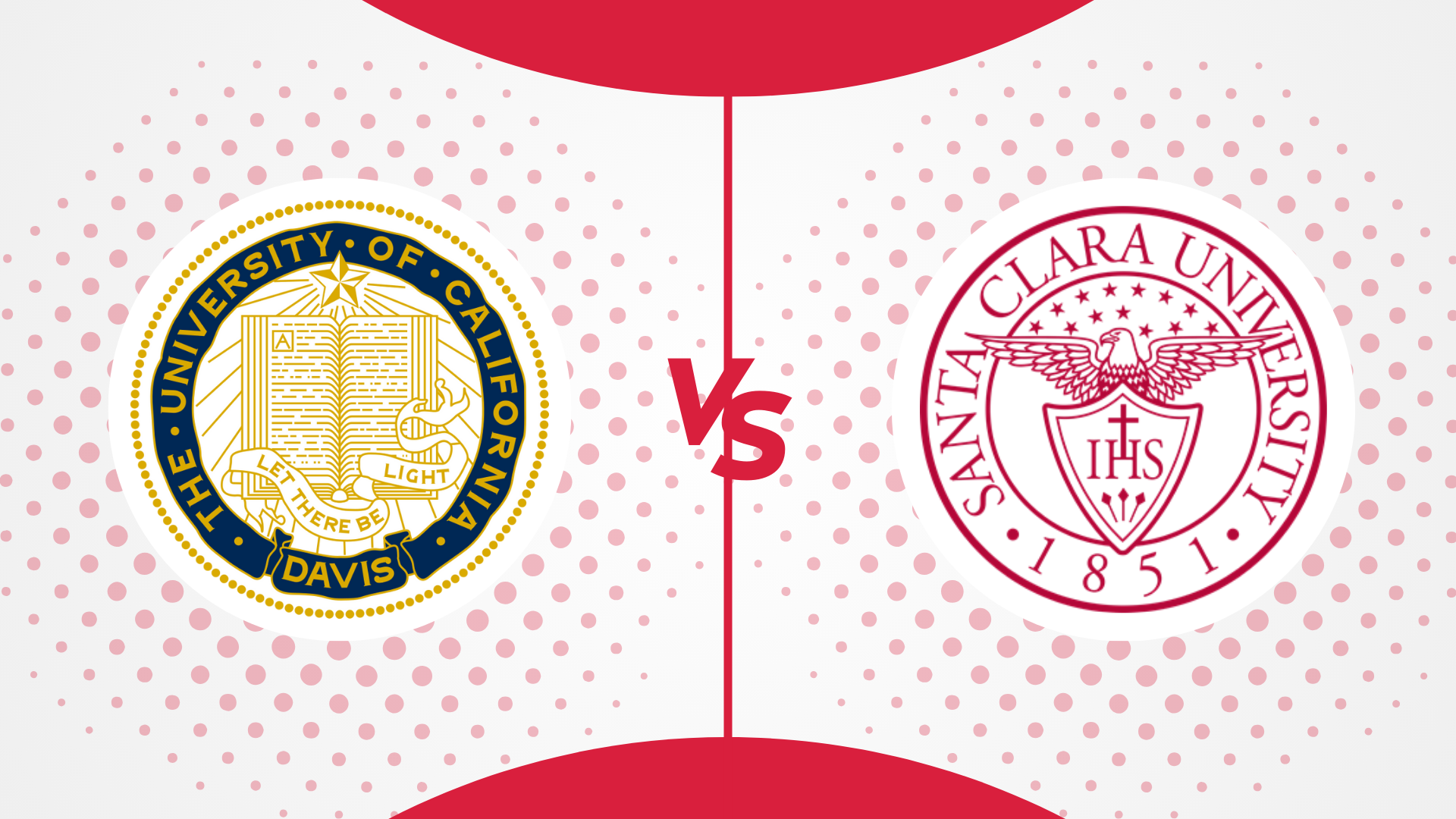
UC Davis vs Santa Clara University: How Do They Compare? [2024]
August 23, 2024 -

University of Chicago vs Northwestern University: How Do They Compare
August 20, 2024 -

Caltech vs MIT: How Do They Compare [2024]
August 2, 2024 -

MIT vs Harvard: How Do They Compare [2024]
July 27, 2024 -

Cornell vs Harvard: How Do They Compare? [2024]
July 27, 2024 -

Yale vs Harvard: How Do They Compare [2024]
July 22, 2024 -

Harvard vs Princeton: How Do They Compare [2024]
July 16, 2024 -
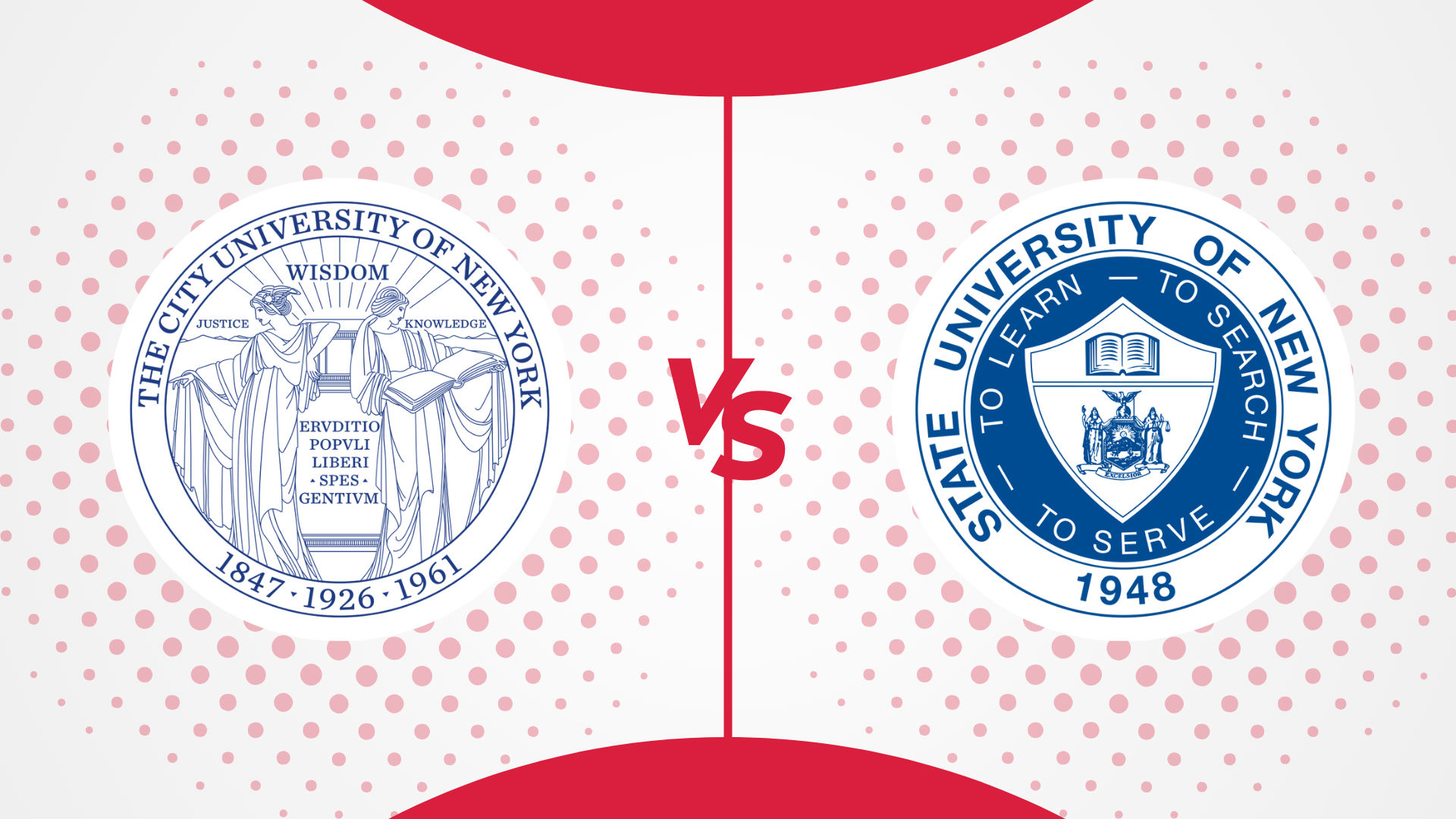
CUNY vs SUNY: Which One is For You in 2024
July 9, 2024 -
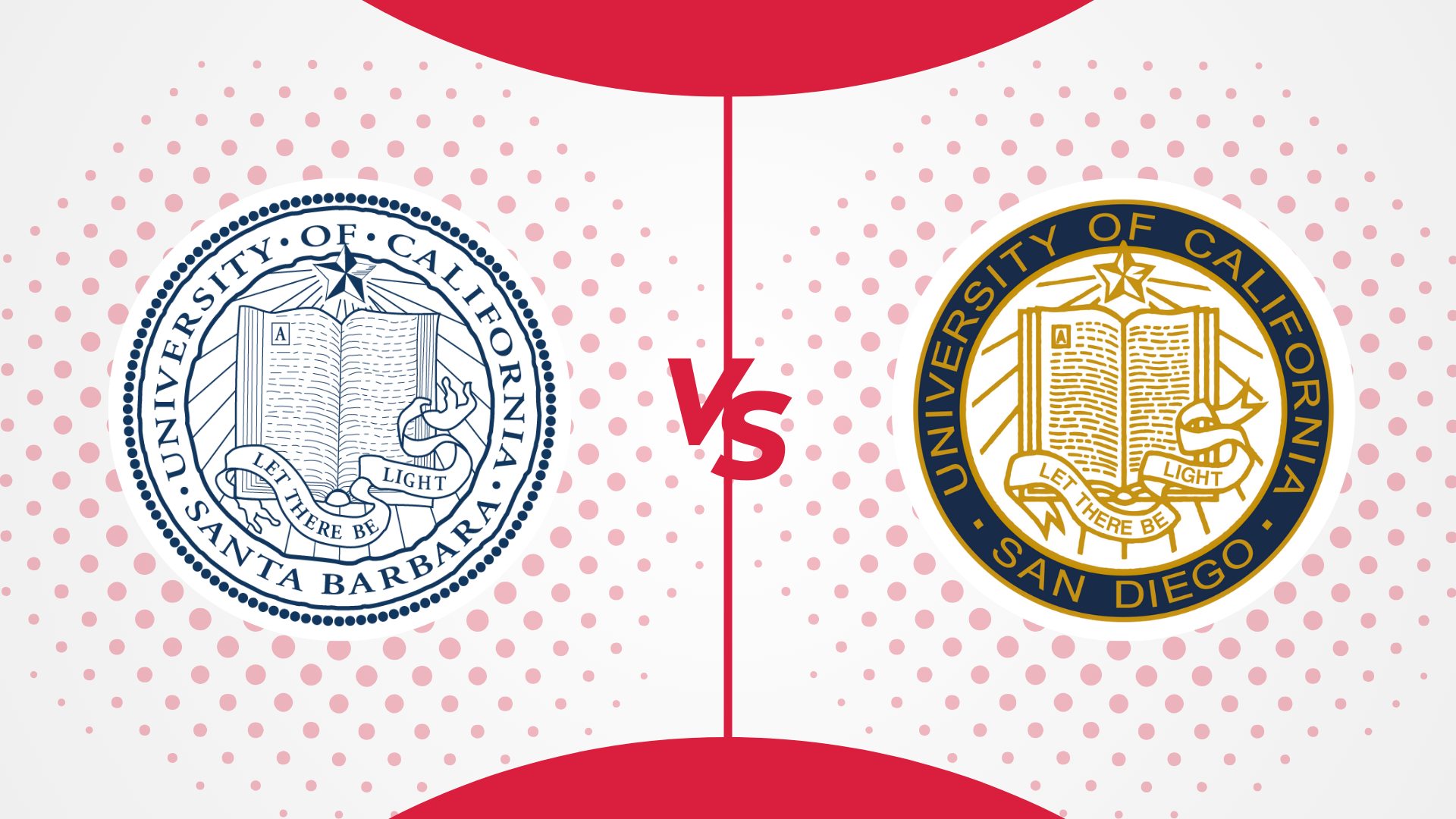
UCSD VS UCSB: Which One is Better For You in 2024
July 9, 2024 -
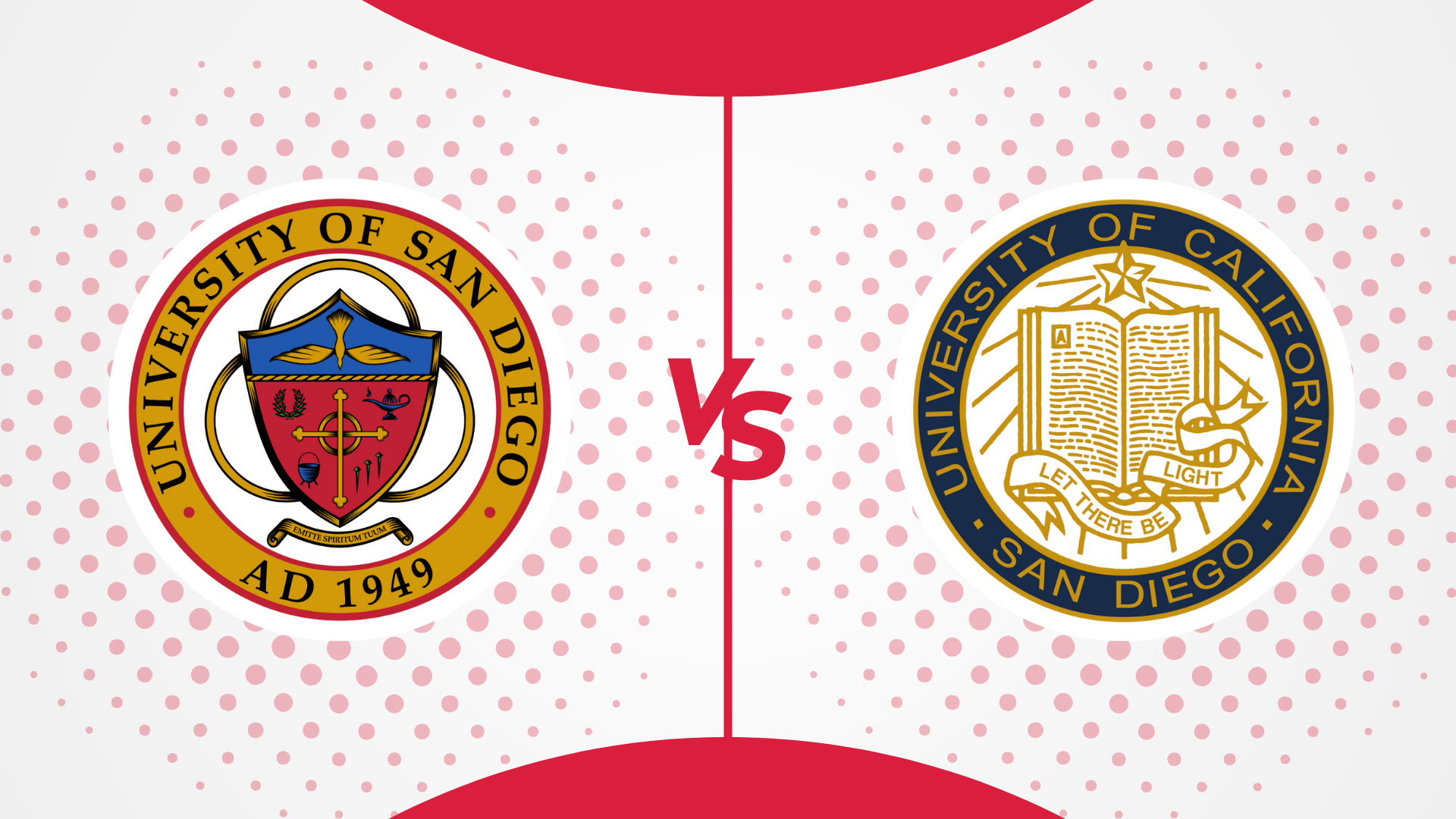
USD vs UCSD: Which one should you choose in 2024?
July 9, 2024 -
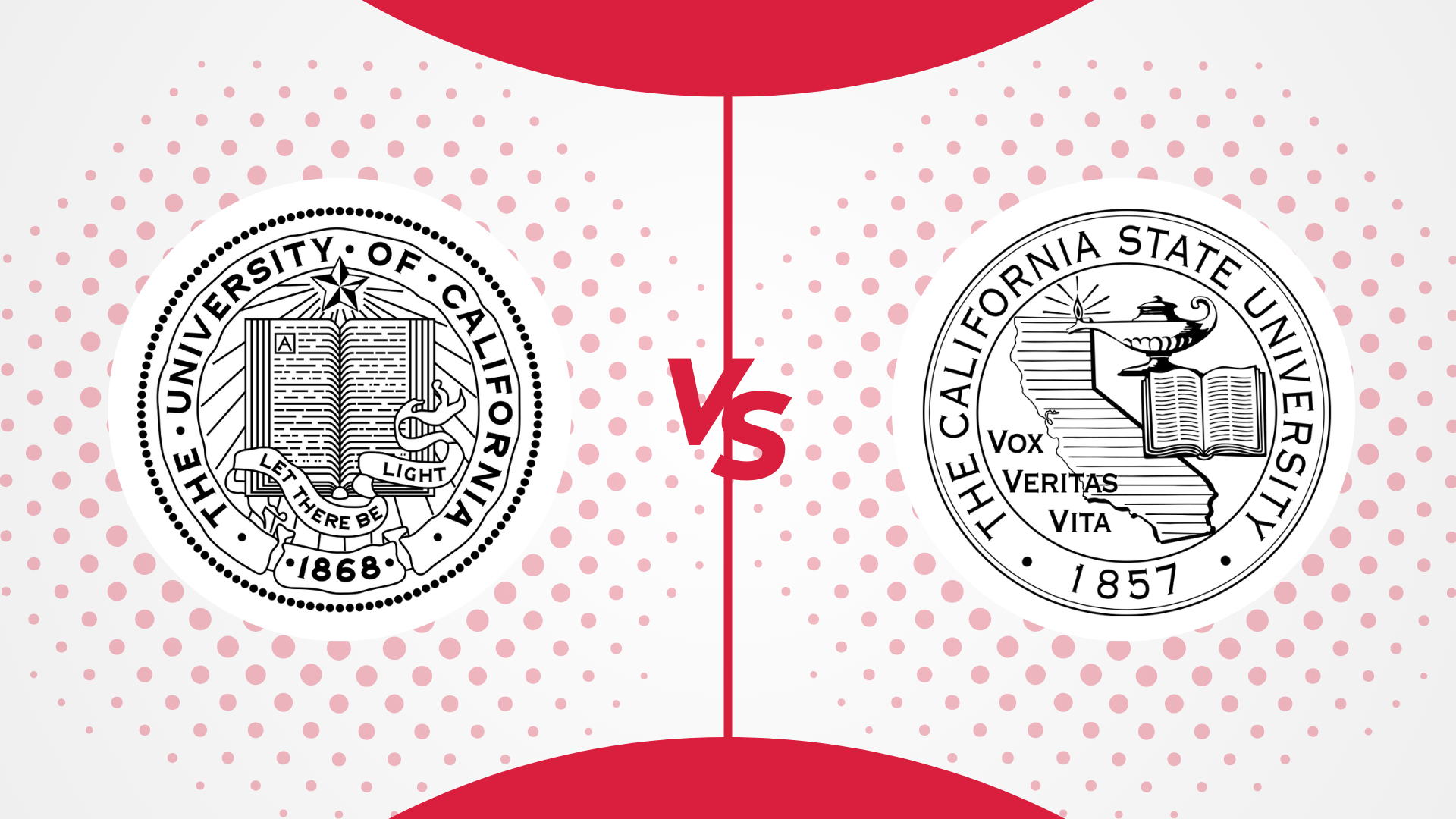
UC vs CSU: Which One is Better in 2024?
July 9, 2024 -
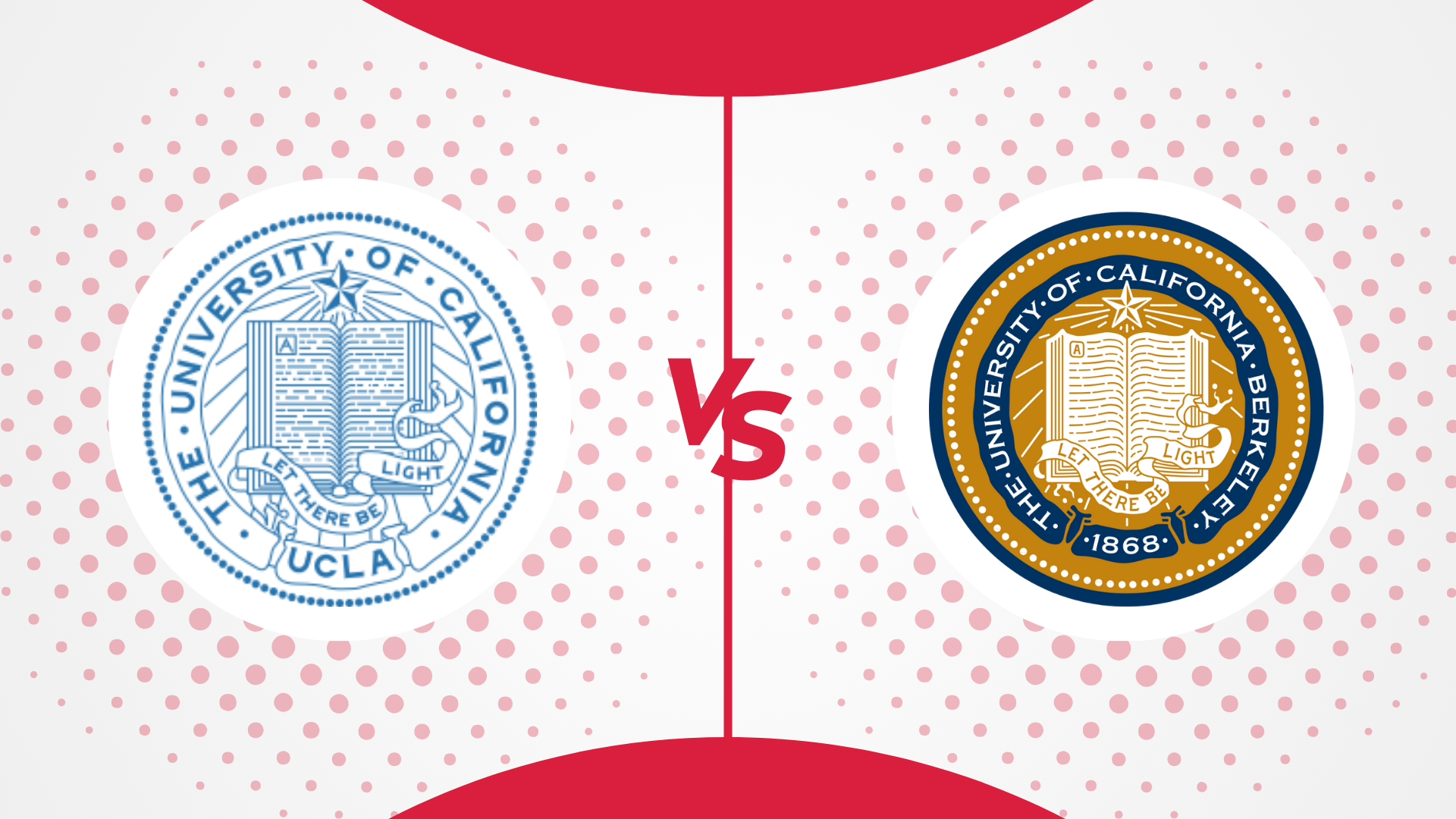
UCLA vs UC Berkeley: Which One is Best in 2024
July 9, 2024 -

University of Arizona vs Arizona State University: Which One is Better in 2024
July 9, 2024 -

Penn State vs UPenn: Which is Better for International Students in 2024
July 9, 2024 -

Northeastern vs Northwestern: Which One is Best in 2024
July 9, 2024 -

Northeastern University vs Purdue University – Which One is Better in 2024?
July 9, 2024 -

Boston College vs Boston University: Which One is the Best in 2024?
July 9, 2024 -

LSU vs UCLA: Which Is Better For You In 2024?
July 8, 2024 -

NYU vs Boston University: Which One Is Better For You In 2024
July 8, 2024 -

USC vs UCLA: Which One Is Better For You In 2024?
July 5, 2024 -
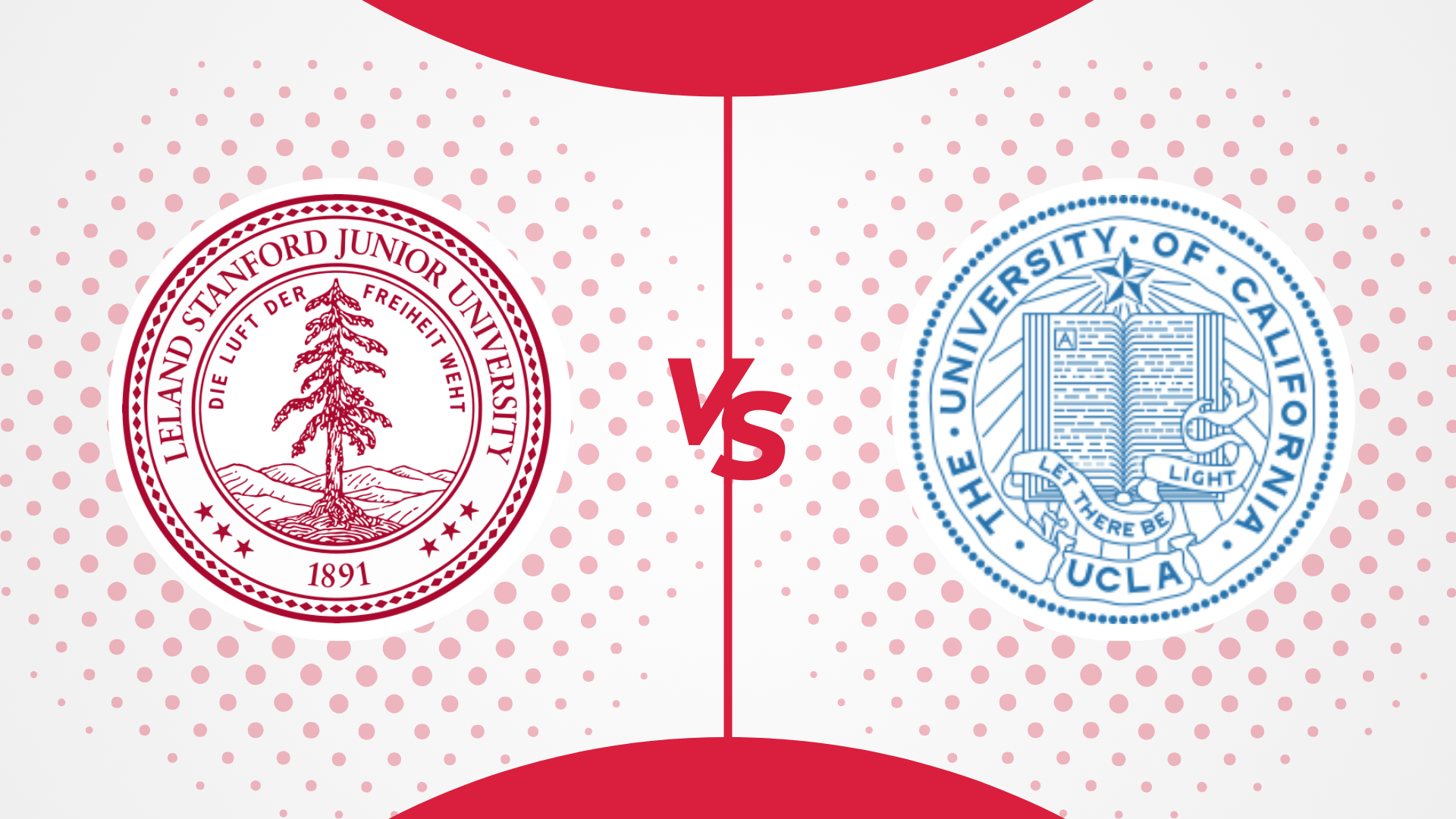
Stanford vs UCLA: Which One is Better For You in 2024
June 28, 2024 -
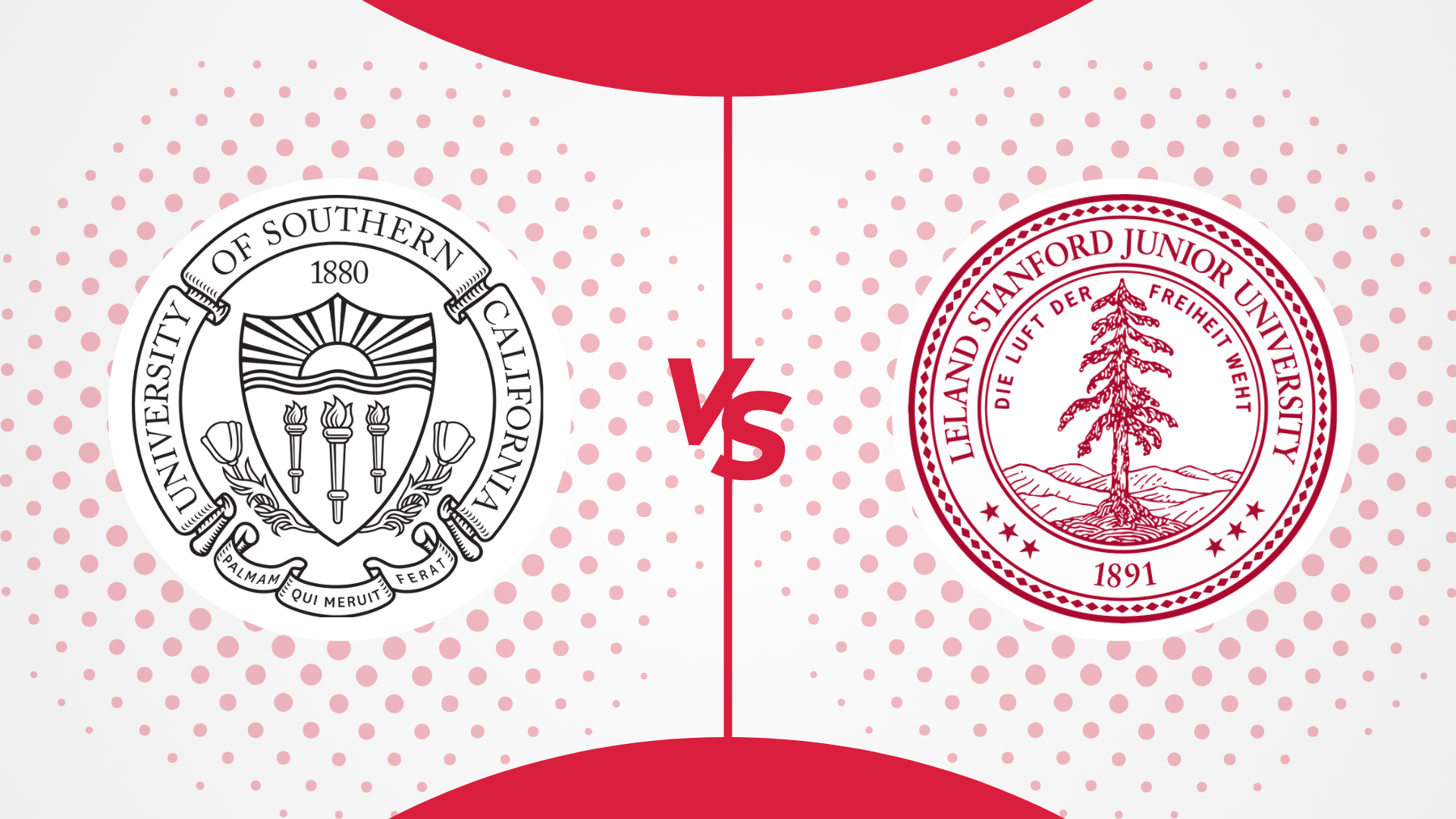
USC vs Stanford: Which One is Better For You in 2024
June 28, 2024 -
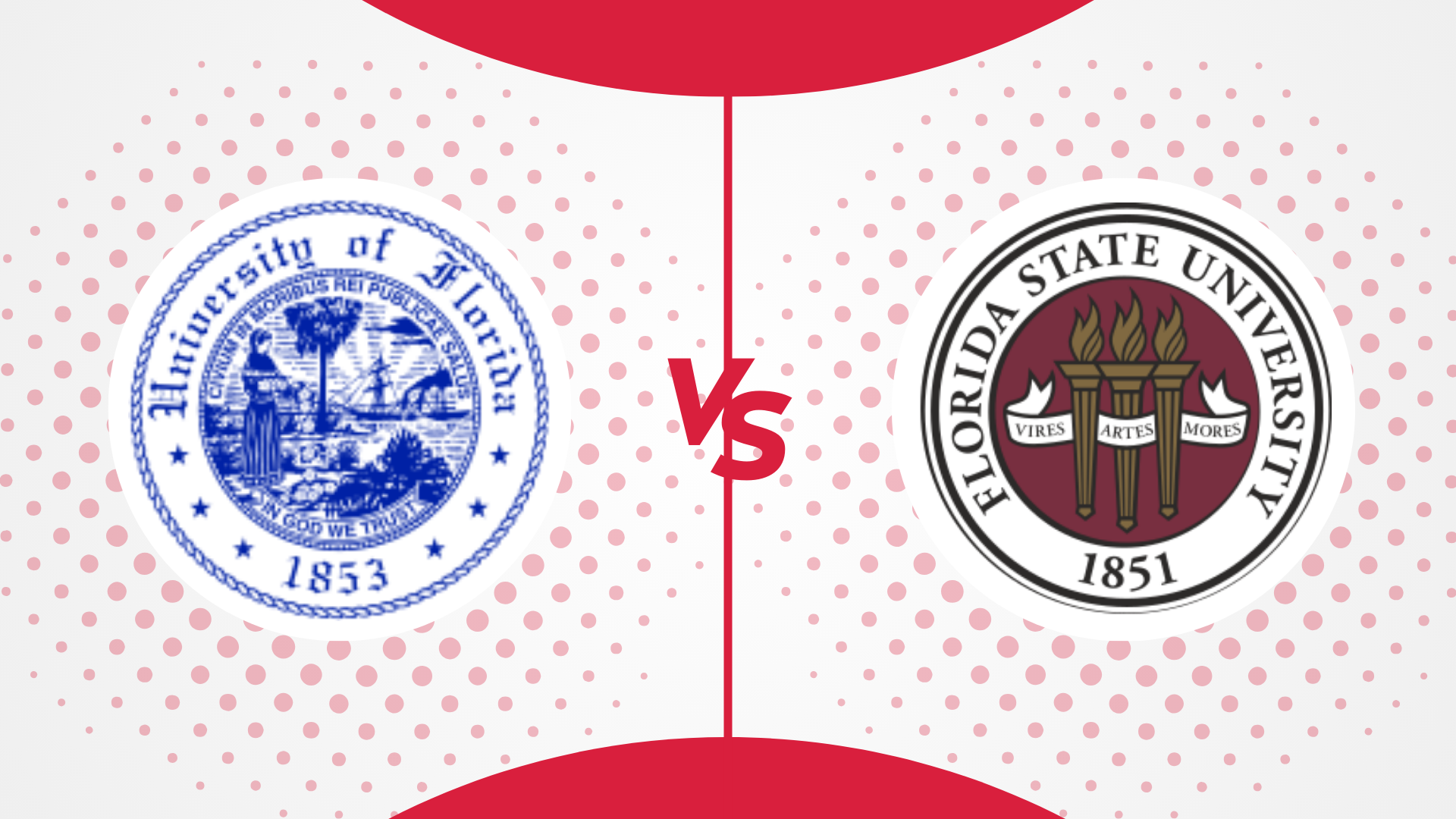
University of Florida vs Florida State University: Which One is Better For You in 2024
June 28, 2024 -

NYU vs Columbia: Which Is Better In 2024?
June 28, 2024 -

Princeton vs Columbia: Which Is Better In 2024?
June 28, 2024 -

NYU vs Cornell: Which One Is Better In 2024?
June 28, 2024 -

Boston University vs Northeastern: Which one is best in 2024
June 28, 2024 -

NYU vs UCLA: Which Is Better For You In 2024?
June 28, 2024
